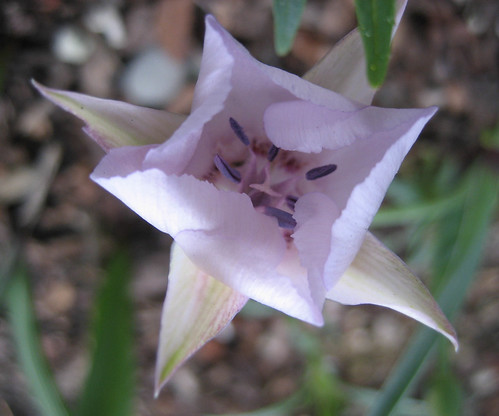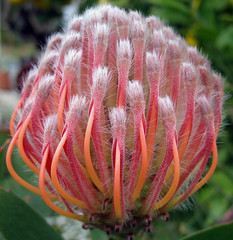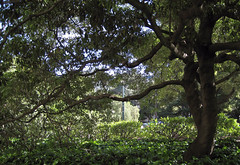Spring is in the air in Nor-Cal, most deliciously in the scent of
Pittosporum undulatum, an otherwise nice but nondescript tree that smells divine this time of year. The common name, I think, is wavy-leafed box, but I have been calling it sweet box since I figured out what it was, in honor of its wonderful spring smell. There is, needless to say, nothing particularly boxy about it.
This seemingly precocious spring has induced my first flower of Calochortus umbellatus. The Oakland star tulip is the flower that started it all -- if by "it" you mean my madness. I read about this lovely little bulb and decided that I should plant some, mostly because of the name: it is the only plant I know named after my town. Although apparently even the holotype is from somewhere else. There is no there here. At least part of my reasoning was that it would probably grow well here, being native and all.
But it was not easy to come by, oh no, and thus began my odyssey into the world of rare bulbs and mail order seed and various other obsessions, until I finally obtained some bulbs last fall (Thanks Telos and Far West!). And now my first diminutive and truly beautiful flower has opened.
It is much more subtle than the things that usually appeal to me. Also, admittedly, kind of purple: the petals are flushed a -- delicate! -- mauve purple, and the wonderfully contrasting anthers can at best be called blueish. Nevertheless, I will call them "blue steel".

This first bloom is a mutant: 8 tepals, but the normal 6 stamens. I wish I wasn't an idiot as a child and had learned something about science, because the genetics of the MADS box genes that control these things would be very interesting if I understood it.
Labels: blue steel, Calchortus umbellatus, Gertrude, MADS box, represent, spring, sweet box






